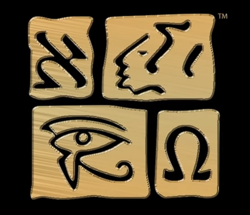
FAIR is a non-profit organization dedicated to providing well-documented answers to criticisms of the doctrine, practice, and history of The Church of Jesus Christ of Latter-day Saints.
FAIR Answers—back to home page

It is claimed by many that the mention of pharaoh is anachronistic to the Book of Abraham. The first thing we should do is review our options about assessing anachronisms in the Book of Abraham.
A) Deny that the anachronism exists and assert that, although it has not yet been attested in an extant source, the posited characteristic does indeed date back to the Middle Bronze Age.
B) Acknowledge the anachronism, but assign it to Joseph Smith as a translator’s anachronism, which does not in and of itself compromise the Book of Abraham as a translation of an ancient source;
C) Acknowledge the anachronism but assign it to an ancient redactor or copyist.
D) Acknowledge the anachronism and assign it to Joseph Smith as the modern author of the text. This is generally the stance of our critics.
Options B and C, in light of current evidence[1] seem more likely.
As the Wikipedia article addressing “Pharoah” writes:
Pharaoh (/ˈfɛəroʊ/, US also /ˈfeɪroʊ/;[1] Arabic: فرعون Phar'aon or Fir'aun Coptic: ⲡⲣ̅ⲣⲟ Pǝrro) is the common title of the monarchs of ancient Egypt from the First Dynasty (c. 3150 BCE) until the annexation of Egypt by the Roman Empire in 30 BCE,[2] although the actual term "Pharaoh" was not used contemporaneously for a ruler until Merneptah, c. 1200 BCE. In the early dynasty, ancient Egyptian kings used to have up to three titles, the Horus, the Sedge and Bee (nswt-bjtj) name, and the Two Ladies (nbtj) name. The Golden Horus and nomen and prenomen titles were later added.
Under scenario “B”, Joseph could have simply used the title of pharaoh to describe the then-king. Under scenario “C” an ancient copyist or redactor could have used the word for pharaoh to describe the then-king and then Joseph could have translated it as such. This view is strengthened by Abraham 1:20 which states “…and also in the court of Pharaoh; which Pharaoh signifies king by royal blood.” A curious thing to need to explain.
Under either scenario, neither the core story of the Book of Abraham, its authenticity, our theology, nor the validity of the prophetic calling of Joseph Smith are threatened.
Other traditions having to do with Abraham speak about a man named “Pharaoh” similarly.
Daniel C. Peterson has talked about "the idolatrous God of Pharaoh" and its inclusion in Joseph Smith's interpretation of Facsimile 1 (this may explain its presence in Abraham 1):
Daniel C. Peterson:
One noteworthy element of the religious situation portrayed in the Book of Abraham is the identification of a crocodile as the idolatrous god of Pharaoh, right there underneath the lion couch. That’s a kind of odd thing to come up with if you’re a yokel farm-boy from upstate New York. Is that the first thing that comes to your mind? “Oh, idolatrous god of Pharaoh!”Although this may have seemed strange in Joseph Smith’s day, discoveries in other ancient texts confirm this representation. Unas or Wenis, for example, was the last king of the fifth dynasty, around 2300 B.C., and his pyramid still stands at Saqqara, south of modern Cairo. Utterance 317, Unas’ pyramid texts, includes the following: “The king appears as the crocodile god Sobek, and Unas has come today from the overflowing flood. Unas is Sobek, green plumed, wakeful, alert….Una arises as Sobek, son of Neith. One scholar observes that “the god Sobek is … viewed as a manifestation of Horus, the god most closely identified with the kingship of Egypt” during the Egyptian Middle Kingdom era (around 2000 B.C., maybe a little later), which includes the time period that tradition indicates is Abraham’s time.
Intriguingly, Middle Kingdom Egypt saw a great deal of activity in the large oasis to the southwest of modern Cairo known as the Faiyum. Crocodiles were common there. You know what the name of the place was to the Greeks? The major town there was called “Crocodileopolis.”[2]
Notes

FAIR is a non-profit organization dedicated to providing well-documented answers to criticisms of the doctrine, practice, and history of The Church of Jesus Christ of Latter-day Saints.
We are a volunteer organization. We invite you to give back.
Donate Now